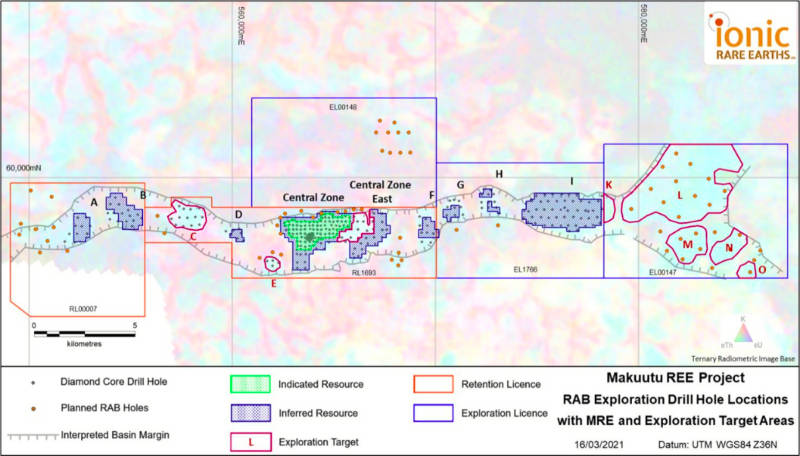Ionic drilling to test new targets for further expansion of rare earths

Pic: Tyler Stableford / Stone via Getty Images
Ionic has kicked off the next phase of drilling aimed at evaluating the potential for further resource extension at its Makuutu ionic clay rare earths project in Uganda.
The 67-hole reconnaissance rotary air blast program totalling 1,200m will test new targets, some of which are potential host types that have not been previously tested, in areas outside of the previous focus of the project.
Makuutu already hosts one of the world’s largest ionic adsorption clay deposits after Ionic Rare Earths (ASX:IXR) tripled its resource earlier this month to 315 million tonnes grading 650 parts per million total rare earth oxides.
Ionic adsorption clay deposits are commonly considered to be some of the cheapest and most readily accessible sources of heavy rare earths.
Managing director Tim Harrison says that key to this drilling is the new eastern target radiometric anomaly that it identified at the newly granted Exploration Licence 00147.
This is expected to deliver a similar outcome to the company’s Phase 2 drill program in 2020, which confirmed that radiometric anomaly targeting is a reliable method of finding ionic adsorption clay rare earth deposits.
“Furthermore, the HREO dominant nature of the clay mineralisation in EL1766 immediately adjacent to the EL00147 could result in a very substantial addition at Makuutu,” Harrison noted.
“Additionally, the company has been patiently waiting for an opportunity to assess the areas adjoining the individual radiometric anomalies within the basin margins to test for further continuity of ionic adsorption clay mineralisation.
‘We expect over the course of the next two to three months we will start to get a more accurate idea on the total potential deposit magnitude at Makuutu which will be critical as we fast-track Makuutu to production.”

Makuutu exploration
The Makuutu mineralisation rests within a 37km long sedimentary basin that was interpreted from aeromagnetic and gravity data.
Drilling to date has focused on radiometric anomalies that are interpreted to be derived from the laterite hardcap within the basin.
Ionic’s Phase 3 rotary airblast drilling program will focus on radiometric anomalies outside the sedimentary basin or from zones within the basin that do not show this type of radiometric response.
An initial RAB program of 25 holes is planned for EL00147 to traverse the main radiometric targets to test for rare earth occurrence, tenor, the regolith profile and underlying fresh rock types.
This article was developed in collaboration with Ionic Rare Earths, a Stockhead advertiser at the time of publishing.
This article does not constitute financial product advice. You should consider obtaining independent advice before making any financial decisions.
Related Topics

UNLOCK INSIGHTS
Discover the untold stories of emerging ASX stocks.
Daily news and expert analysis, it's free to subscribe.
By proceeding, you confirm you understand that we handle personal information in accordance with our Privacy Policy.








